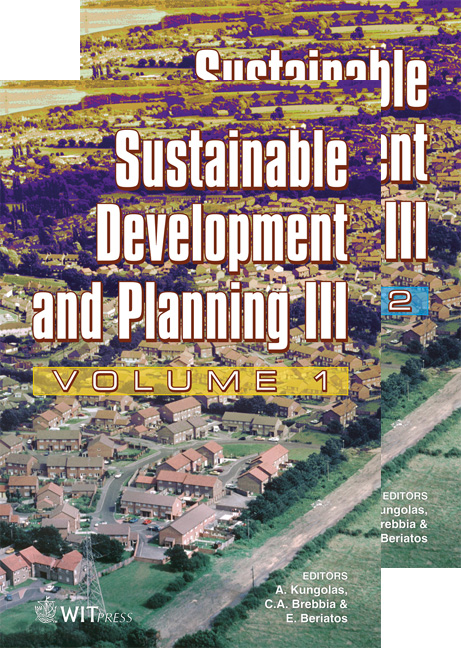The Green Metropolis Generator: Developer’s Toolkit For Urban Landscape In The Green
Price
Free (open access)
Transaction
Volume
102
Pages
12
Published
2007
Size
3,067 kb
Paper DOI
10.2495/SDP070762
Copyright
WIT Press
Author(s)
J. Jonkhof, W. Timmermans & V. Kuypers
Abstract
In this paper, a method is developed to identify a typology of interrelated landscapes in the urban–rural realm, in order to describe the connection between landscape characteristics, natural environment characteristics and ecological strategies, finally translated into spatial planning styles. This interrelated complex of physical, social and managerial concepts may at first seem unusual, but the authors are convinced that this approach provides a useful insight. That one of the great challenges for planners today is to connect the best of two worlds: the one actually focussing on differentiation in governance style in the field of planning concepts, as well the one focussing the debate on landscape ecology on connectivity in spatial structures as the key towards sustainability in both nature development and sustainable urban planning. Keywords: typology, landscape, spatial planning, nature development, urban planning, urban–rural relationship, delta metropole. 1 Preamble 1.1 Problem definition: the quest for a versatile approach In this paper we will discuss the problem of dealing with the paradox of environmental planning: the best and most innovative planning solutions develop under the most severe conditions and stress accumulation. At the global scale, these conditions can actually be found largely in metropolitan areas at the confines of various large river systems, like Shanghai with the Yellow river system, the Antwerp-Rotterdam-Ruhr area with the Dutch estuary complex of Rhine, Scheldt and Meuse river systems, New York with the Hudson bay system,
Keywords
typology, landscape, spatial planning, nature development, urban planning, urban–rural relationship, delta metropole.





